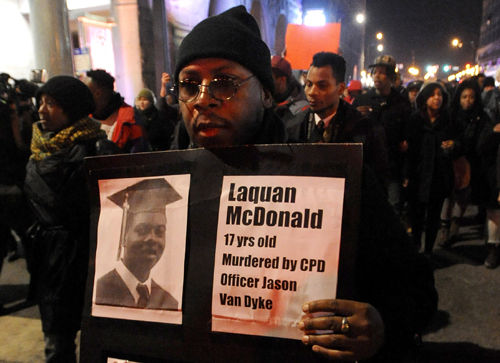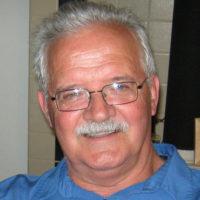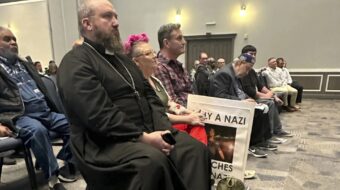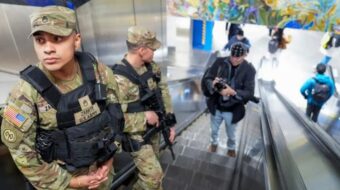
Jason Van Dyke, the Chicago police officer who shot Laquan McDonald on a city street more than a year ago, was finally charged last week with first-degree murder. Twenty-four hours after his arraignment, the police finally released the video of the incident that they’d had in their possession all along. In it, Van Dyke is seen executing the 17-year-old, firing 16 shots, 13 while McDonald lay on the street.
All of which begs two questions: why did it take a year before charges were brought against Van Dyke and why did it take a judge’s order to release the video to the public?
The answer to both questions is the same. It was an attempt by the Police Department and Mayor Rahm Emanuel to take themselves out of the line of public criticism as well as give Van Dyke either a free pass, or a slap on the wrist, or a reduced punishment for his criminal action. But thanks to the vigilance of community leaders and activists a first step has now been taken, to hold Van Dyke accountable and unearth his accomplices in the police department and City Hall.
Of course, everyone pressing for justice in this case understands that turning this first step into a conviction of Van Dyke and appropriate actions against obstructionist public officials will require sustained public oversight and engagement every step of the way. It will also take a major campaign to reach new supporters and influence public opinion.
Beyond righting this particular and terrible wrong (to the degree possible, because Laquan McDonald was robbed of his young life and his family’s grief will never disappear), it is increasingly apparent that something more must be done.
In other words, responding to specific injustices is absolutely necessary; it is the ground on which people must continue to fight to rein in racist police practices and crimes. But at the same time, the almost daily stream of vigilante and state-sanctioned violence against young people of color-especially young men, though women are victims too-demonstrates the necessity of building a multi-racial people’s coalition that has the vision, moral authority, and political acumen to radically reconstruct the entire system of criminal justice.
Such an undertaking begins with the complete undoing of an interconnected set of institutions, police, judicial, and political enforcers, rules and procedures, and prisons that systematically ensnare, incarcerate, and cripple the life chances of – too often kill – young people of color, and especially African American young men.
But it can’t stop here. No less important is a frontal and wide-ranging challenge to the powerful ideological apparatus that gives legitimacy to the current judicial system and its racist practices. This apparatus promotes the notion in subtle and not so subtle ways and on multiple platforms (media, educational institutions, courtroom, pulpit, right wing think tanks, etc) that young people of color are themselves the problem, that Black lives don’t matter. Sunk in the notion of racial inferiority dating back to slavery and colonial expansion, racist ideology is at the same time adaptive. Its rationalizing arguments, code words, symbols, and images are modified by changing conditions of racist exploitation and oppression and anti-racist struggle.
In short, in this worldview, the consequences of racist exploitation and oppression become the causes, while a rigged and racist system of justice that overwhelmingly stacks the deck against young people of color – not to mention deep social and economic inequality in the larger society – becomes invisible. As New York Times columnist Charles Blow put it, “People try to pitch this … as an issue of blacks against the police or vice versa, but that is simply an evasion, a way of refusing societal blame for a societal defect: We view crime and punishment with an ethnocentric sensibility that has a distinct and endemic anti-black bias.”
There is no doubt that uprooting this ideology and the institutions, political coalitions, and outrages that it sustains will take a movement of enormous strength and reach – something on the scale of the civil rights movement of the 50s and 60s that was led by the incomparable Martin Luther King. And while this is a tremendous challenge to be sure, both necessity and the emerging social movements, including but not limited to the Black Lives Matter movement, make it possible.
Photo: In this Nov. 24, file photo, a protester holds a sign as people rally for 17-year-old Laquan McDonald, who was shot 16 times by Chicago Police Department Officer Jason Van Dyke in Chicago. AP Photo | Paul Beaty, File

MOST POPULAR TODAY

High Court essentially bans demonstrations, freedom of assembly in Deep South

Zionist organizations leading campaign to stop ceasefire resolutions in D.C. area

U.S. imperialism’s ‘ironclad’ support for Israel increases fascist danger at home


UN warns that Israel is still blocking humanitarian aid to Gaza






Comments